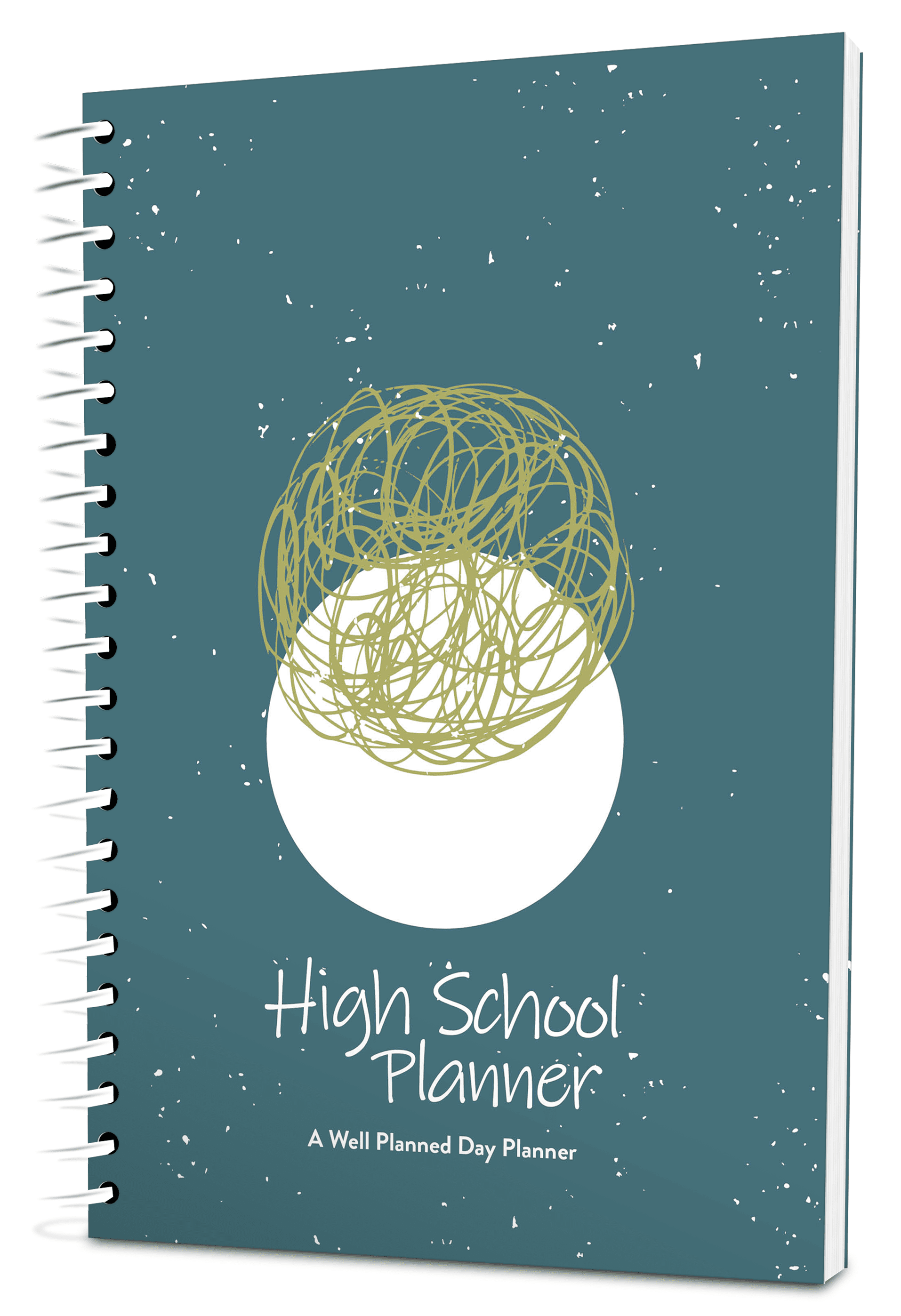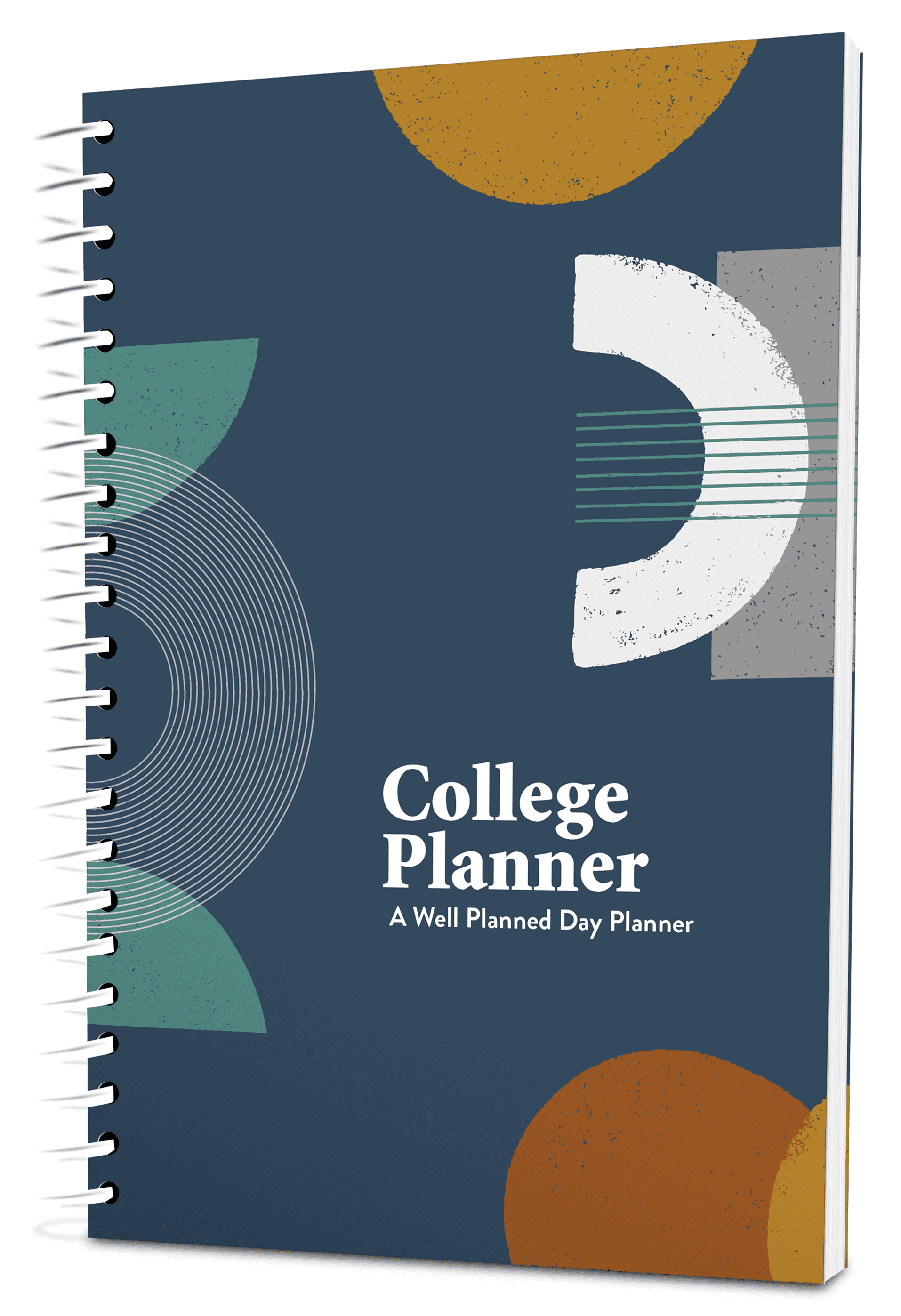Shown above: Well Planned Day Large Family Homeschool Planner
Are you excited about planning a new year?
For some homeschoolers, their favorite time of the year is when they get to explore their new curriculum and start to plan for a new school year. But if you don’t enjoy planning or don’t have a clue how to break curriculum down to create benchmarks and lesson plans, this is probably the time of year you dread the most.
If this is you, I’d like to help reduce some of that dread by walking you through what it looks like to break curriculum down and create benchmarks and lesson plans.
Break Curriculum Down into One Lesson a Day
We’ll start with the easiest: the curriculum that can be easily divided into weekly or daily lessons. Think of the workbooks that boast “180 easy lessons” or the textbooks that are divided into 36 chapters.
First, sit down with your planner and estimate how many weeks and days you plan to school. For instance, a “standard” school year is 36 weeks, five days each week, for a total of 180 days. Look at when you plan to start and when you want to be finished. Mark off any days or weeks when you know you definitely won’t do school. Then see what’s left. That’s the length of your school year!
Now, quickly look through your curriculum and pull out any subjects that can easily divide into that number of days or weeks — or at least close to it. Some might be a little tight while others might have a couple of weeks of wiggle room (and wiggle room is a very good thing!).
Pay attention to that as you create benchmarks so you can make sure to stay on top of the ones that are tight fits while also remembering that you can occasionally set aside the ones with wiggle room when you need some extra space in your week.
Because you’ve already taken time to break curriculum down into manageable pieces, as you sit down to plan each week, you’ll automatically know that these subjects need to be assigned once a day or once a week.
Easy, right? The rest of the courses might take a little more work, but the same principle will apply, even for them. Hopefully, that dread has already started to be replaced by encouragement!
Break Curriculum Down into Units
Obviously, not everything fits neatly into our preferred number of school weeks and days. What do you do with those resources that don’t divide out smoothly?
Let’s start by considering how to break curriculum down when it includes workbooks or lessons that don’t divide easily or with those that seem to have much more than can easily fit into a year.
First, skim through the introduction to the curriculum or textbook. Frequently, the author of the resource provides some guidance for knowing how much to complete each day or week.
If not, take a moment to divide the course in half. This may not divide evenly, but you can still work with it. For instance, consider a course that has ten workbooks to process through. If you divide ten by two, you discover that your student needs to complete roughly five workbooks each semester to finish the course in a typical 36-week school year. Write that down in your planner.
Now, let’s break that down a little more. Each semester is made up of three six-week blocks. Obviously, five doesn’t divide by three very easily. But, if you set up your benchmarks to show that your student will complete one workbook every three to four weeks, that keeps you on track to finish during the school year. So, each week, you’ll aim for approximately a third of a workbook.
Some weeks, you’ll move more quickly than planned while other weeks you might need extra time. That’s just fine! When you’re working to break curriculum down into benchmarks, the goal is not to plan in detail — you’ll do that a week at a time. The goal is to get an idea of how much progress you need to make to stay on track. That’s why the trick is to break curriculum down into manageable benchmarks, first into semesters, then into six-week blocks.
Yes, it takes a bit of work and figuring to create these benchmarks. But, when you break curriculum down into manageable bits, it’s so much easier to accomplish.
Break Curriculum Down to Accommodate the Extras
Let’s look at one more piece of the puzzle: how to break curriculum down to accommodate the extras. These are the fun read-alouds that you want to work in, the nature studies or experiments that aren’t worked into the curriculum, the field trips, and more. How do you fit them in without messing up the plan?
There are a couple of ways to do this, but the easiest way is by evaluating double duty. When can an experiment, nature study, or field trip teach the same thing as a reading assignment or worksheet? Let the hands-on exploration take the place of the planned assignment. This is especially true for younger students who learn best by doing.
My other favorite trick is to creatively make use of time. Read aloud to your children while they eat lunch, then munch on your lunch while they practice reading aloud to you. Fit those fun picture books into your bedtime routine. Or make chore time more fun by taking turns reading while folding clothes or washing dishes.
The key here is to have a routine in place so you can know where to fit the extras into the existing routine.
By putting these three tips into practice, learning how to break curriculum down so you can create benchmarks and daily lesson plans will become easier and easier!










